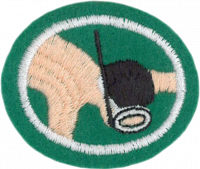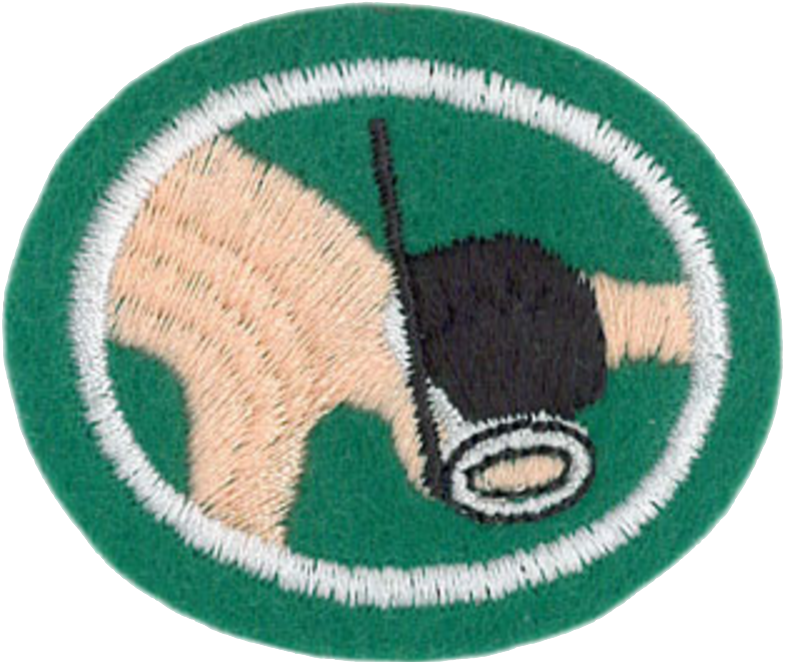AY Honor Skin Diving Answer Key
1
For tips and instruction see Swimming - Intermediate.
2
- Ability to swim at an intermediate level.
- Have properly fitting equipment. (at least a Snorkel and a Facemask. - Flippers/Swim Fins can be very useful as well)
- Always have a swimming buddy!
3
- The Mask
- Always buy a properly fitting mask. It is the most important piece of equipment for snorkeling; it is your window to the underwater world. A correctly fitted mask will keep water out.
- The Snorkel
- Your snorkel allows you to breathe through your mouth while floating face down in the water. Using the snorkel efficiently and comfortably requires practice. After all, humans are used to breathing through their noses. To make matters easy, you can get a snorkel with a purge valve to help remove unwanted water.
- The Fins
- Snorkel fins ought to be flexible and lightweight. There are two basic styles: full foot and adjustable strap. Full foot fins are typically lighter, but adjustable strap fins allow you to protect your feet by wearing booties. Neoprene booties guard your feet from jagged coral and any sharp objects on the bottom or in the sand.
4
4a
- Beach - long, narrow strips of unconsolidated sediment (usually sand) that are deposited by longshore drift. Pocket beaches (small, discontinuous beaches existing in protected areas) are common in areas with high wave energy. Sediment is transported along beaches by beach drift (zigzag motion of sediment particles in the swash and backwash of waves). The amount of sand in the beach system remains fairly constant, but the profile of a beach changes with the season:
- Summer beaches - usually sand-covered and characterized by:
- wide berms
- gently-sloping beach faces
- smooth offshore profiles
- Winter beaches - beach profile that is modified by storm wave erosion and possesses the general characteristics:
- coarser-grained sediment
- steeper beach faces
- berms are small or missing; sand is eroded from beach.
- offshore sand bars parallel beach; sand is transported and deposited in offshore bars.
4b
- Tides
- Tides are the rhythmic rise and fall of sea level at a specific location. Tidal ranges are most extreme in narrow inlets and bays. Tides are produced primarily by the gravitational attraction exerted upon the Earth by the moon, which causes oceans to deform toward and away from the moon. Two high tides and two low tides occur each day at most locations because of the Earth's rotation. Tidal motions are described in terms of:
- High tide
- Low tide
- Spring tides - alignment of sun and moon (occurs every 2 weeks) produces very high and very low tides.
- Neap tides - Moon and sun are at right angles to one another (occurs every 2 weeks), so that gravitational pulls are partially offset, resulting in less contrast between high and low tides.
- Tidal Currents
- These currents are the horizontal flow of water accompanying the rise and fall of the tide. They help keep waterways clear. These currents are much stronger in restricted areas (like harbors) than in the open ocean, and can be described as:
- Flood tides - where a shoreward flow of water occurs with high tide.
- Ebb tides - where an oceanward flow of water occurs with low tide.
4c
It is imperative that a Skin Diver be familiar or at least be aware with the available marine life where the activity is done. Below are some items that needs to be remembered.
- One also needs to know what marine life is dangerous/poisonous or can be fatal when a skin-diver gets in contact with the organism.
- Some marine life should not be disturbed or at least minimal interaction should be made.
- Never break or destroy any corals.
5
Avoid Showboating, taunting and shoving while skin diving...
It's great to also practice the Golden Rule - Treat other participants as you would want to be treated.
6
Qualified Supervision All Skin Diving activity must be supervised by a mature and conscientious adult who understands and knowingly accepts responsibility for the well-being and safety of the youth members in his or her care; who is experienced in the water and is confident of his or her ability to respond in the event of an emergency;
Qualified Lookout The qualified lookouts are stationed in a location (either afloat or ashore) where it is possible to see and hear all those engaged in the snorkeling activity. The qualified lookout is a strong swimmer with lifeguard skills (i.e., competent swimmers with basic water-rescue skills serve as both lookouts and lifeguards). A minimum of two qualified lookouts are provided with at least one qualified lookout for every eight snorkelers in the water.
Buddy System All participants in Skin Diving activities should be paired as buddies and remain close enough that they are constantly aware of their buddy's location and condition. Generally, buddies should take turns making breath-holding dives. That is, one buddy remains at the surface, floating with his mask in the water while breathing through the snorkel, and keeps an eye on the buddy who is down. When the diver surfaces, both buddies should check their position relative to the rest of the group before moving on or letting the other buddy dive. It is the combined responsibility of the adult supervisor, the lookout, and the lifeguards to know the number of people in the water at all times, to make periodic checks of that number, and to call for buddy checks when it is necessary to confirm that number.
7
You may be able to avoid hyperventilation.
- Breathe through your nose. It is harder to hyperventilate when your mouth is closed because you can't move as much air through your nose.
- Loosen your clothing. Tight belts and waistbands, girdles, bras, and skintight jeans can all restrict breathing and cause shallow, upper-chest breathing.
- Learn belly-breathing (diaphragmatic breathing) techniques and practice them. People who hyperventilate typically take shallow breaths, filling only their upper chest when they inhale.
- Experiment with different relaxation techniques and see what works best for you.
- Talk to friends, family members, or a counselor to help you relieve anxiety. Keep a journal to help you focus on your problems and find workable solutions.
- Eat a nutritious diet. Reduce the caffeine in your diet by limiting your intake of caffeinated coffee, tea, soft drinks, and chocolate.
- Exercise. Regular aerobic exercise forces you to take full breaths and helps you to reduce anxiety that contributes to hyperventilation.
- Make sure you get good sleep at night. Being rested may help reduce daytime anxiety.
Hypothermia Treatment
- Dry the hypothermic person and cover him or her with blankets.
- Shelter the person from wind and water.
- Provide heat to the neck, underarms, and groin. Initially, heat only the trunk to avoid core temperature afterdrop. Afterdrop occurs when the extremities cool faster than the trunk. If the extremities are rewarmed, the colder blood within them will reenter the circulation and temporarily worsen the hypothermia.
- Keep the person lying down.
- Administer warm fluids only after the victim stops shivering (loss of the shivering reflex signifies significant hypothermia).
- Avoid suddenly moving/jarring the person because this may trigger an abnormal heart rhythm.
- CPR may be necessary. Resuscitation efforts should be continued until the person's body temperature rises to at least 95°F/35°C (never give up: one reported victim recovered in a morgue). All temperatures indicated are rectal measures, which give a closer indication of core temperature. If the person with hypothermia is cooperative, the temperature may be taken by mouth or other method.
8
Here is where you get wet and have some fun.


